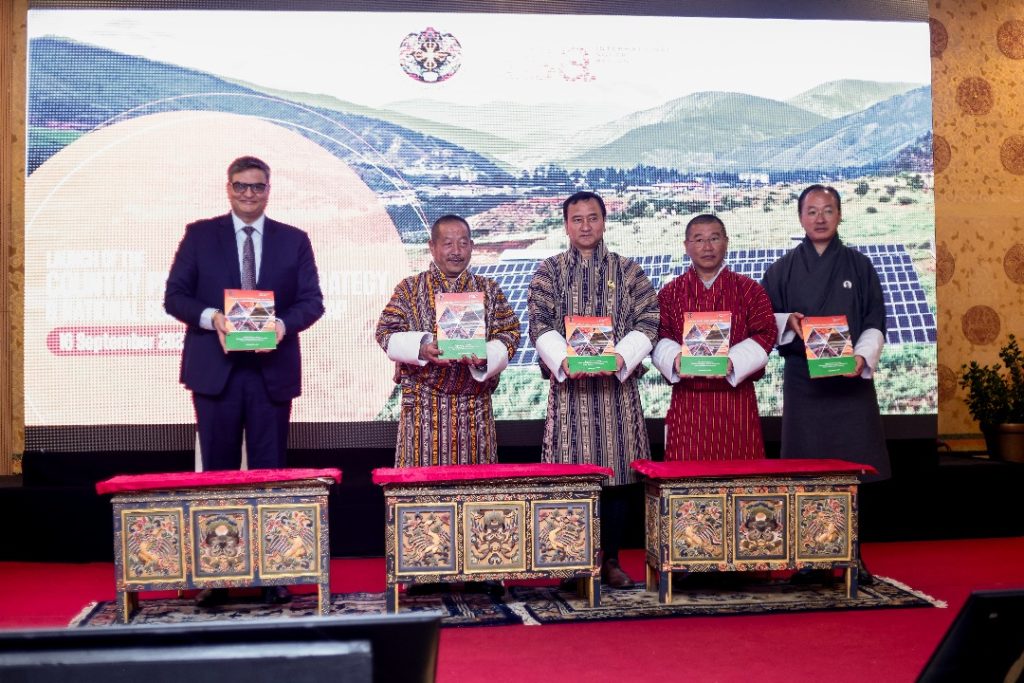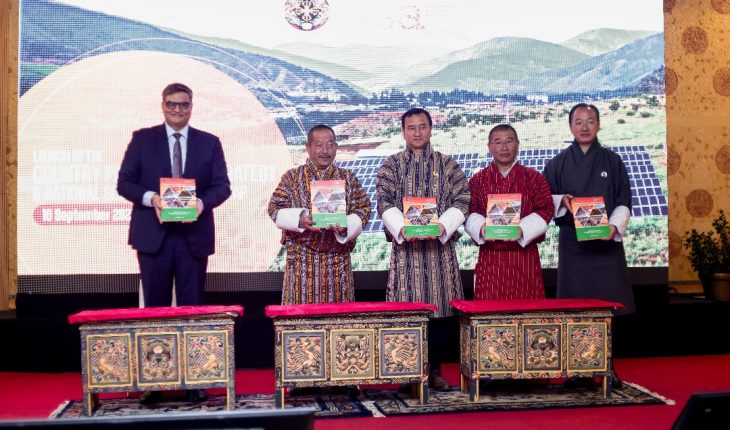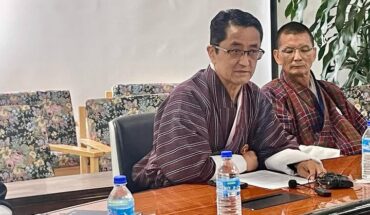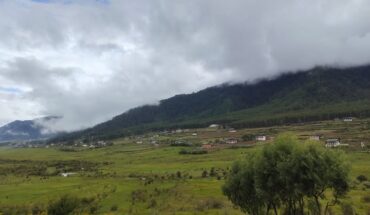
DAWA ZANGMO | Thimphu
Bhutan has become the first country in the world to endorse and officially launch a Country Partnership Strategy (CPS) with the International Solar Alliance (ISA), laying out a comprehensive roadmap to accelerate solar energy development over the next five years.
The CPS establishes a results-oriented framework that aligns with ISA’s renewed vision and supports the Royal Government of Bhutan’s (RGoB) ambition to install 5,000 megawatts (MW) of solar capacity by 2040.
The partnership is designed to advance National Solar Roadmap by focusing on four priority areas: scaling up solar deployment to enhance energy security, strengthening policy and regulatory frameworks, building institutional capacity through training and development, and mobilizing financial investments to drive the solar sector forward.
Ashish Khanna, Director General of ISA, underlined Bhutan’s pioneering role in finalizing the new partnership strategy.
“We are aligning with Bhutan’s national solar roadmap, which targets 1,000 MW by 2030 and 5,000 MW by 2035,” he said. “The country has the potential to generate nearly 12,000 MW of solar power. Hydropower drops sharply in winter when demand peaks, making diversification essential. Solar energy provides a sustainable alternative.”
A national rooftop solar policy and net-metering regulations are expected to be introduced soon, enabling households and businesses to install rooftop solar systems and sell surplus electricity back to the national grid.
In addition, ISA is preparing a concept note on solar-powered electric vehicle (EV) charging infrastructure and electrification, following a request by PM Tshering Tobgay. The proposal, expected within four months, will seek to integrate clean mobility solutions into Bhutan’s broader energy transition.
The initiative also aims to mobilize USD 500 million in investments and expand solar applications to rural areas. Solar-powered pumps, lift irrigation systems, dryers, and cold storage facilities are being prioritized to help farmers overcome challenges posed by labor shortages, shifting rainfall patterns, and limited arable land.
“Solar-powered irrigation, dryers, and storage are key to addressing Bhutan’s agricultural challenges,” said Yonten Jamtsho, Director of the Department of Agriculture. “They provide solutions to food security while creating value-added opportunities.”
International organizations are stepping up their support. UNICEF has announced plans to solarize 60 schools in the initial phase, with the number expected to rise to 230 by 2030.
“Solar energy could save nearly USD 1 million in fuel and firewood costs, allowing more resources to be directed toward improving education quality,” said UNICEF Country Representative Rushnan Murtaza.
Similarly, the United Nations Development Programme (UNDP) is promoting private sector participation by linking entrepreneurs with blended financing through the Bhutan Trust Fund for Environmental Conservation.
From the domestic side, the Bhutan Chamber of Commerce and Industry (BCCI) has been playing a crucial role in shaping trade laws and promoting investment in renewable energy.
BCCI officials have called for incentives such as tax credits, low-interest loans, and demonstration projects to accelerate adoption.
“Small businesses and farmers need stronger market linkages to see tangible benefits,” a BCCI representative noted. “Technology and digital platforms can help connect them to markets and ensure fair prices for their produce.”
ISA officials also highlighted Bhutan’s limited arable land and reliance on imports, stressing the importance of solar powered agriculture in strengthening food systems.
“Specialty fruits, for example, could become high value exports with proper preservation and storage facilities,” an ISA official said.
Recognizing that financing will be key, ISA is working with partners such as the Asian Development Bank (ADB) and the World Bank to secure concessional funding.
Innovative mechanisms such as renewable energy funds and guarantee schemes are being considered to provide reliable financing options for local businesses and entrepreneurs.
Experts note that solar power offers the resilience that hydropower alone cannot guarantee. With river flows declining during winter just as domestic electricity demand peaks, Bhutan’s reliance on imported energy has been steadily increasing.
Solar power, particularly through rooftop and decentralized systems, is expected to offer a sustainable solution by balancing seasonal shortages and ensuring stable year-round supply.
To build the required human resource capacity, Bhutan is preparing to establish the Solar Technology Application Resource Centre at the College of Science and Technology in Phuentsholing.
This center will serve as a hub for training, knowledge-sharing, and innovation. “This will create opportunities for Bhutanese youth, from entrepreneurship to green jobs,” Khanna added.
The employment dimension is seen as one of the most transformative outcomes of this partnership. As Bhutan invests in solar training centers and local capacity-building initiatives, new opportunities will emerge for technicians, entrepreneurs, and small enterprises.
From rooftop installations in urban areas such as Thimphu to solar pumping systems in remote valleys, the development of a green economy is expected to create livelihoods and help address youth unemployment, one of the country’s pressing challenges.
Observers note that the ISA Bhutan partnership is more than just an energy strategy it is a long-term blueprint for sustainable nation-building. It integrates technology, tradition, and policy to guide Bhutan’s next chapter of growth.
If successful, Bhutan will not only secure its own energy future but also position itself as a regional model for renewable energy in mountainous economies.
Given Bhutan’s difficult terrain and connectivity challenges, success in integrating solar power alongside hydropower would set an example for countries across the Himalayas and beyond.





